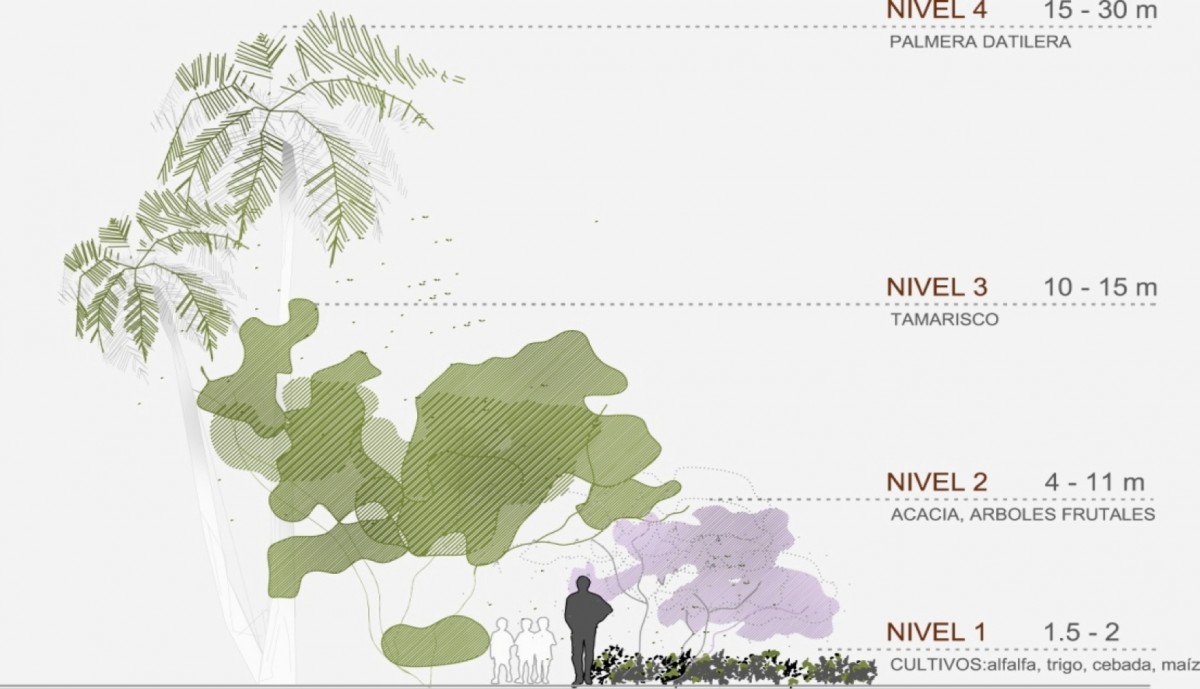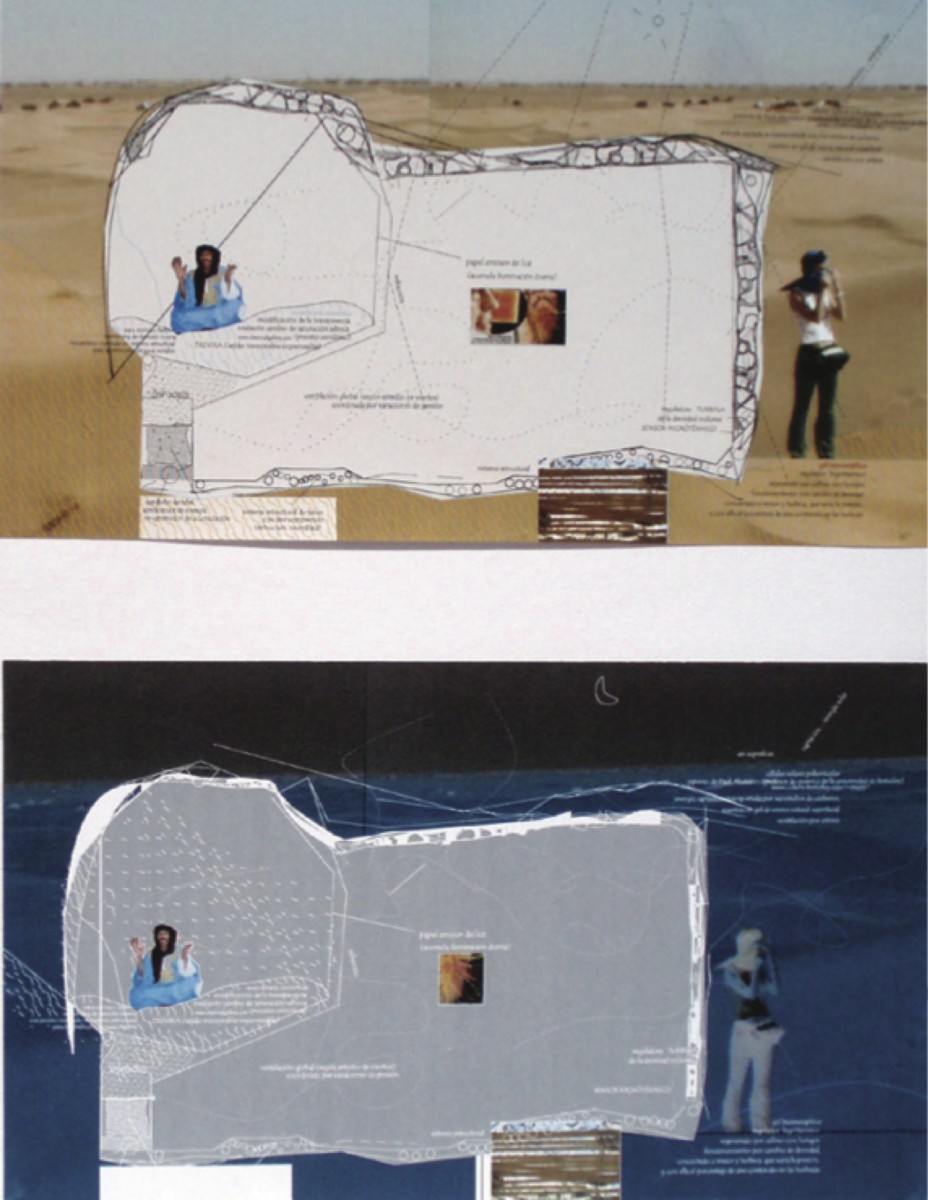Interview with Angela Ruiz - Architectural Innovator
Submitted by Edlyn García La Torre on
Ángela Ruiz is an architect, professor and researcher from Spain. She is currently developing her PhD in ‘Architecture of the extremes, Desert architecture ’(about Development and Sustainability in desert areas, working on bioclimatic approach in desert architecture), and participating in different research groups about Innovative Education projects and Hypermedia field. Since 2006, Angela has been professor in IE University, and also in other universities such as Polytechnic University of Madrid and Universidad Antonio de Nebrija, as Associate Professor . She has also been lecturer in international conferences, leading workshops, and courses about art, architecture and engineering in several countries, such as Laghouat (Argelia), Paris, Chania and Tessaloniki (Greece), Ekaterinburg (Rusia), Kaunas (Lituania) or Lodz (Poland) and participated in Workshops and courses in Spain, Sweden, Romania or Macedonia. She has also been facilitator in several Design Thinking workshops for IE School of Business.
As founder of Atipical Architecture, www.atipical.com, her greatest passion is the research of innovation in architecture, looking for a symbiosis between art and architecture, and between new architectures generated by complex systems of graphical production and intelligent and bioclimatic architecture, climatic adaptation systems and new energetic mechanisms. This passion is reflected in the awards she received such as the Prize CIBARQ, about Bioclimatic architecture.
What is your doctoral thesis about?
 |
|
Images by Angela Ruiz |
I am currently developing a thesis on Sustainable Development of Oasis and the Architecture of the Desert. This thesis derived from a project in the desert that led me to research about plants and animals, which continued to revolve in my head for many years. Now it has materialized in a tangible oasis, which proves the feasibility of applying novel technological systems derived from biomimetic studies of natural systems.
The case study is an oasis in the Sahara desert in southern Morocco, where living conditions are quite poor, lack of water is evident and the houses are made from compacted earth. Materials research and applicable technologies for improving the quality of life of the oasis is necessary because it affects 900 million people worldwide who live in arid environments. And what a better starting point than to get inspiration from nature.
How did your interest in Biomimicry come about? In what way have you been able to integrate it to your profession and architectural research?
  |
|
Drawings by Angela Ruiz |
My interest in biomimicry began as a student, in a fortuity form o rather a more natural way, since I started to study it without even knowing that what I was researching and studying was called "biomimicry".
It all started when we were asked to do a project in Madrid or the Sahara desert, and I chose the extreme option. In extreme conditions, the greater the architectural challenge in order to respond appropriately.
Contemplating how to undertake the project of how to inhabit the desert, I thought I should find the answer in the inhabitants there: starting with plants and animals.
And so I realized that to dwell in the wilderness is a skin problem, the boundary between inside and outside. And like cactus skin reacts to the low humidity and high temperatures, the skin of architecture should react. And so, a project came in reverse order, from the skin to the establishment.
At all stages of development, I sought to solve the problem by getting inspired by ecological systems, for example, to resolve the internal morphology, I studied the termite homes.
Years later I discovered that what I had naturally made, was called biomimicry, and could be applied to solve many of the issues raised by the art of living, and easily integrated into the college projects, although it was hardly possible to integrate it into the profession, because of regulatory constraints, and material existence. That material that I created as cactus skin had similarities with existing materials, but not yet applied to architecture or were under research, so for clients, not even talk about it! .. Eventually, someday, everything will be integrated.
What is your opinion about applying the scientific method in architecture and design?
It is clearly essential. Research is needed to evolve the architecture and construction of habitats where we live. Observe nature, from Leonardo da Vinci, has always given us the keys for development. Nature’s design is complex and intelligent, beyond simple morphology, for its function.
 |
|
Imáges by Angela Ruiz |
¿What opportunities and potential has Biomimicry to transcend in architecture?
I'm more interested the question in reverse: what possibilities do architecture has by taking advantage of the potential of biomimicry. I do not see biomimicry as part of the architecture, but architecture as a part of nature, as a member of the ecosystem, it must adapt and blend to evolve, improve, and transcend.
The Importance of Research in Architecture
“If you want to innovate in architectural projects and contribute something to the world of architecture, then RESEARCH.” –Arch. Ángela Ruiz
Without research, in architecture there is no progress or evolution. Architecture has always nurtured from deep observations of systems far it, from the beginning, that were inspired by the golden ratio found in nature, through the modern movement inspired by the technology and the industrial revolution, to the biomimetic architecture inspired by nature, both in its external morphology and functionality, merging with it, or making a contemporary reading of the natural mechanisms and extrapolating natural complex adaptive systems.
In any case, research is an engine of change, of evolution, which makes architecture in something unique and different. You need to find that differential factor than can cause an improvement in architectural production. The projects that are based on research, are radically different from those that rely on traditional academic guidelines.
If you want to innovate in architectural projects and contribute something to the world of architecture, then research. Deeply investigate on the work of other architects, beyond pure morphology, or the graphic results shown in architectural magazines that are in little shops and kiosks. Go beyond, that is what research is, deepen your knowledge, transgressing the limits of the patent and dig the root causes of design decisions.
Go even beyond the architectural boundaries. Investigate other fields outside architecture, but certainly can be translated, transplanted and reinterpreted. It really all has to do with architecture, if understood as a "place to live" where humans live. We have taken charge of the fqct that all revolves around "the human": sociology, history, psychology, environmental science ... and not just the scientific world, you can also investigate cooking, sports, or music exoterism to reinvent the architecture.
Are the lines of the hands not similar to territorial fragments? Do the muscles not tighten similar as tensile structures? Do we not feel the vibrations of the beauty of the auditorium space such like music that resonates in it? Does architecture not be about, like the kitchen, reinventing by combining existing and known ingredients, giving a personal touch? Give a spicy touch to projects, daring, provocative, when you can no longer use, because of urban regulations, flour, egg and poultry. Did the eggshell not inspire one to build concrete domes? Between the superficial metaphor and deep knowledge development, there is a world of possibilities to implement encoding and decoding to be applied to research in architecture.
The boundaries of this world of research for architecture are infinite. And it takes some brave people who dare to plunge fearlessly and explore the infinite world.
The entrance door is nothing more than just the passion, intimate and personal. Any door is valid, you just come and see what you want to make: a thesis, article or innovative resolution of a construction project, and even the simple personal pleasure of transgressing the limits to a world that will certainly surprise you.
"I do not see biomimicry as part of the architecture, but architecture as a part of nature, as a member of the ecosystem, it must adapt and blend to evolve, improve, and transcend." –Arch. Ángela Ruiz










